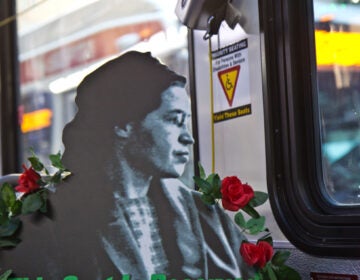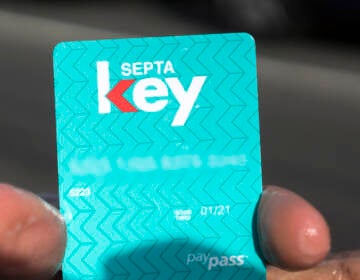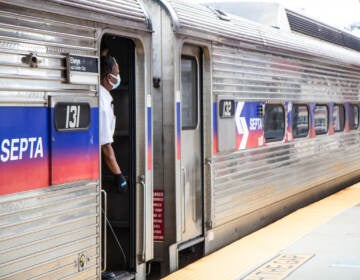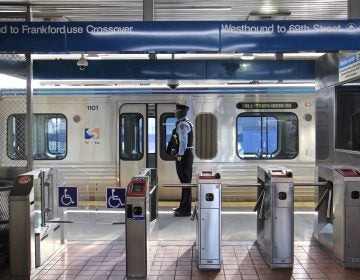‘Welcome back’ discounts and new schedules address SEPTA’s COVID ridership slump
Along with some discounts, SEPTA adds service on some routes, but longer waits on others, to adjust to COVID ridership trends.
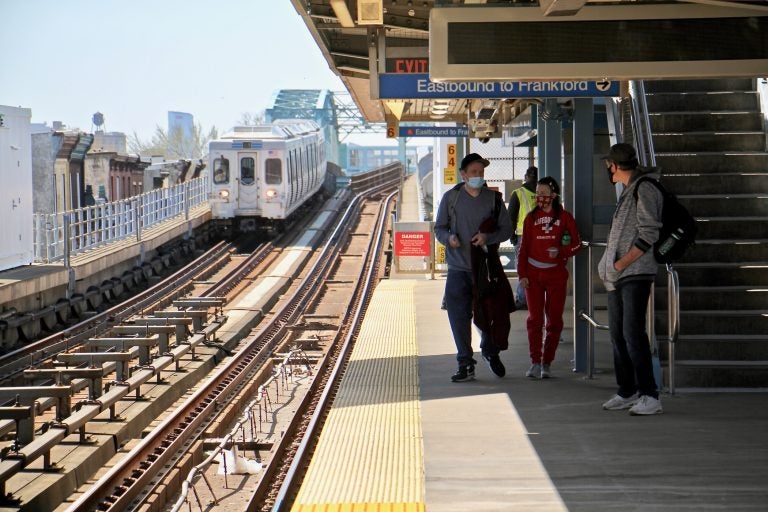
Passengers wait at the Somerset Station on the Market-Frankford line. (Emma Lee/WHYY)
SEPTA announced some changes to some bus and Market-Frankford Line schedules that will go into effect the week of Feb 27 along with the annual spring transit schedules and discounts for the month of March.
This comes after SEPTA has experienced issues with staffing as a result of the ongoing pandemic. With the new schedule, the hope is that it will have a positive effect on higher-demand routes. The changes are being made in an effort to reflect the reality of current ridership and make the schedules more reliable.
Starting the week of March 7th through the week of March 21, SEPTA is offering riders 25 percent off weekly passes “to welcome riders returning to the system.” This includes all weekly passes whether for its subways, buses, trolleys, or regional rails. The savings range from $6.50 to $13.75 depending on the type of pass you purchase. It’s an attempt to get more riders on the system and reward ones that have been riding with SEPTA through the pandemic.
Ridership has been significantly lower than it was before covid. Andrew Busch, a SEPTA spokesperson said “We’re approximately at 50 percent of the ridership we saw pre-COVID.”
The company has taken a deep look into ridership data to help them determine which areas experience more riders as opposed to those that are lower. There are 17 routes, including Routes 2, 6, 19, 20, 24, 29, 33, 45, 46,52, 53, 57, 79, 88, 124, 125, and L that have lower ridership.
The routes listed will have minor reductions in the frequency of stops. For instance, a bus might run a few minutes less often. Adjusting those routes will help SEPTA to move resources around to ones with higher demand.
“We looked at the ones where we’re seeing high demand and trying to bolster the service there to make sure we are supporting people as they’re continuing to go to essential jobs and the other people who are coming back to in-person work and other activities,” Busch said.
The Market-Frankford line is the biggest or “workhorse” line with the highest number of riders. The line starts up in the Northeast at the Frankford Transportation Center running all the way through Center City, West Philadelphia, and then to Upper Darby.
Before the pandemic, there was a higher demand in the morning and late evening on the Market-Frankford line. There still is a need, just not as much. Now there will be a slight adjustment to the rush hour times from five to six minutes of how often a train comes. This will help address the need for more mid-day trains.
 WHYY is one of over 20 news organizations producing Broke in Philly, a collaborative reporting project on solutions to poverty and the city’s push towards economic justice. Follow us at @BrokeInPhilly.
WHYY is one of over 20 news organizations producing Broke in Philly, a collaborative reporting project on solutions to poverty and the city’s push towards economic justice. Follow us at @BrokeInPhilly.

Saturdays just got more interesting.
WHYY is your source for fact-based, in-depth journalism and information. As a nonprofit organization, we rely on financial support from readers like you. Please give today.


